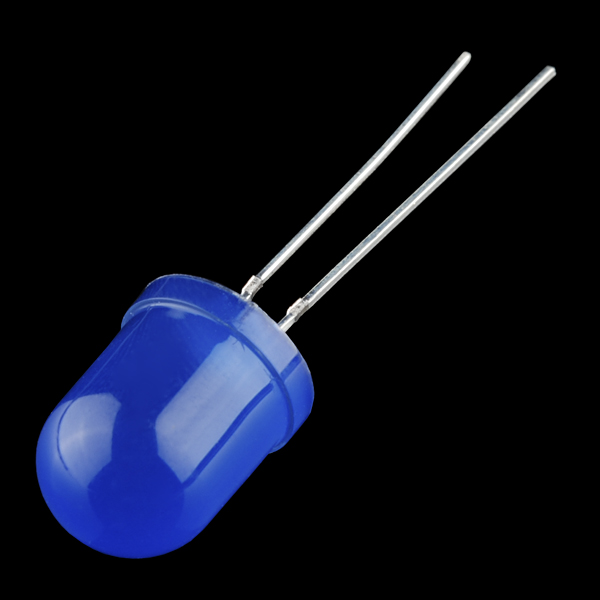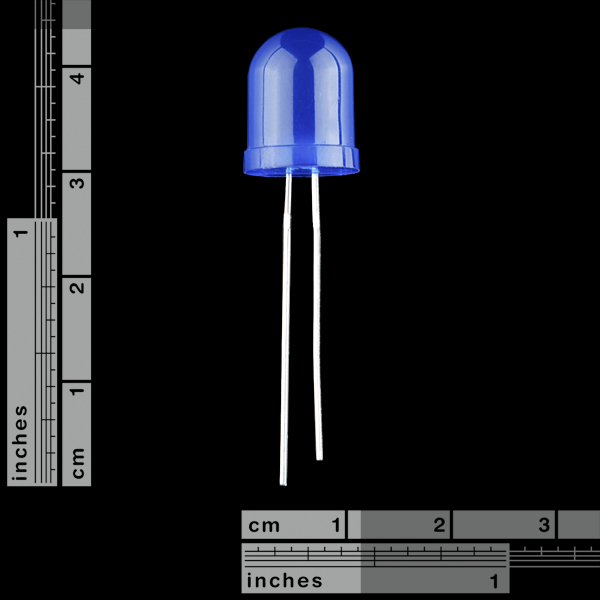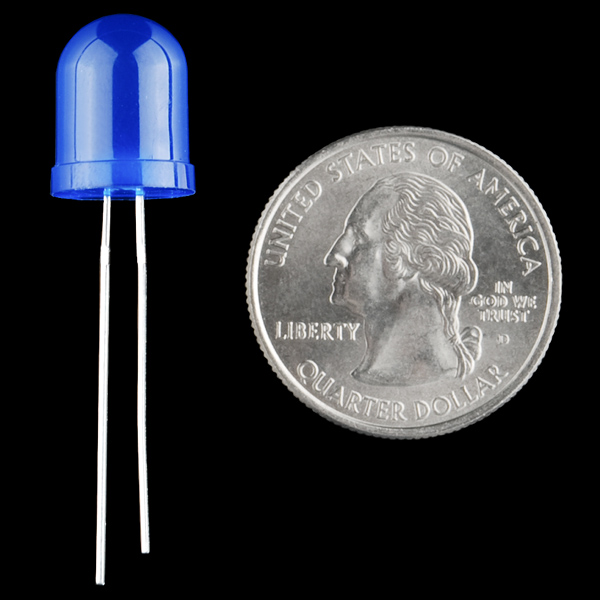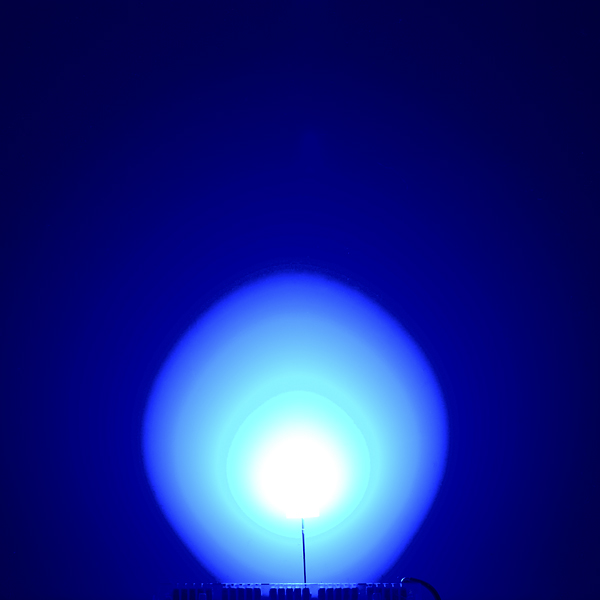Check out these big 10mm through-hole LEDs! The opaque epoxy package causes these LEDs to have a soft, diffuse glow.
- 465-470nm Blue
- 3.0-3.4VDC Forward Voltage
- 20mA Forward Current
- 40 degree viewing angle
- 100-150 MCD output
- [Datasheet](http://cdn.sparkfun.com/datasheets/Components/LED/10mm blue LED YSL-R1047B5D-D2.pdf)
- LED Tutorial
Diffused LED - Blue 10mm Product Help and Resources
Core Skill: Electrical Prototyping
If it requires power, you need to know how much, what all the pins do, and how to hook it up. You may need to reference datasheets, schematics, and know the ins and outs of electronics.
Skill Level: Rookie - You may be required to know a bit more about the component, such as orientation, or how to hook it up, in addition to power requirements. You will need to understand polarized components.
See all skill levels
Comments
Looking for answers to technical questions?
We welcome your comments and suggestions below. However, if you are looking for solutions to technical questions please see our Technical Assistance page.
Customer Reviews
No reviews yet.





These are really poor quality LEDs. I have had about 1/4 of the leads break off before I could even get them situated into a project.
what happened to the other blue led
Great big LED, but besides the different-length leads,* there is no polarization identification like the flat part normally seen on LEDs!!!*
Maybe its too much to ask- but what about a photo or video showing this turned on at a specified current in comparison to the high brightness LED?
Comparing these to the high brightness (10,000 mCd) LEDs is an apples to oranges comparison. The high brightness LEDs have 4 LED chips and really can be used for some illumination applications; but they're not good for indication applications because they are blinding to look at directly. These LEDs are about 70 times dimmer than the high brightness LEDs and are only good for some indication applications. Because of the blue housing, it can sometimes be difficult to tell if these LEDs are even on.
These are what we used to call "grab bag" LEDs. They're very cheap, low efficiency, and dim. There are much better 10mm LEDs available for less elsewhere.
And these should really be rated at only 15 mA. Operating them at the maximum continuous current of 20 mA will cause them to dim significantly over time.